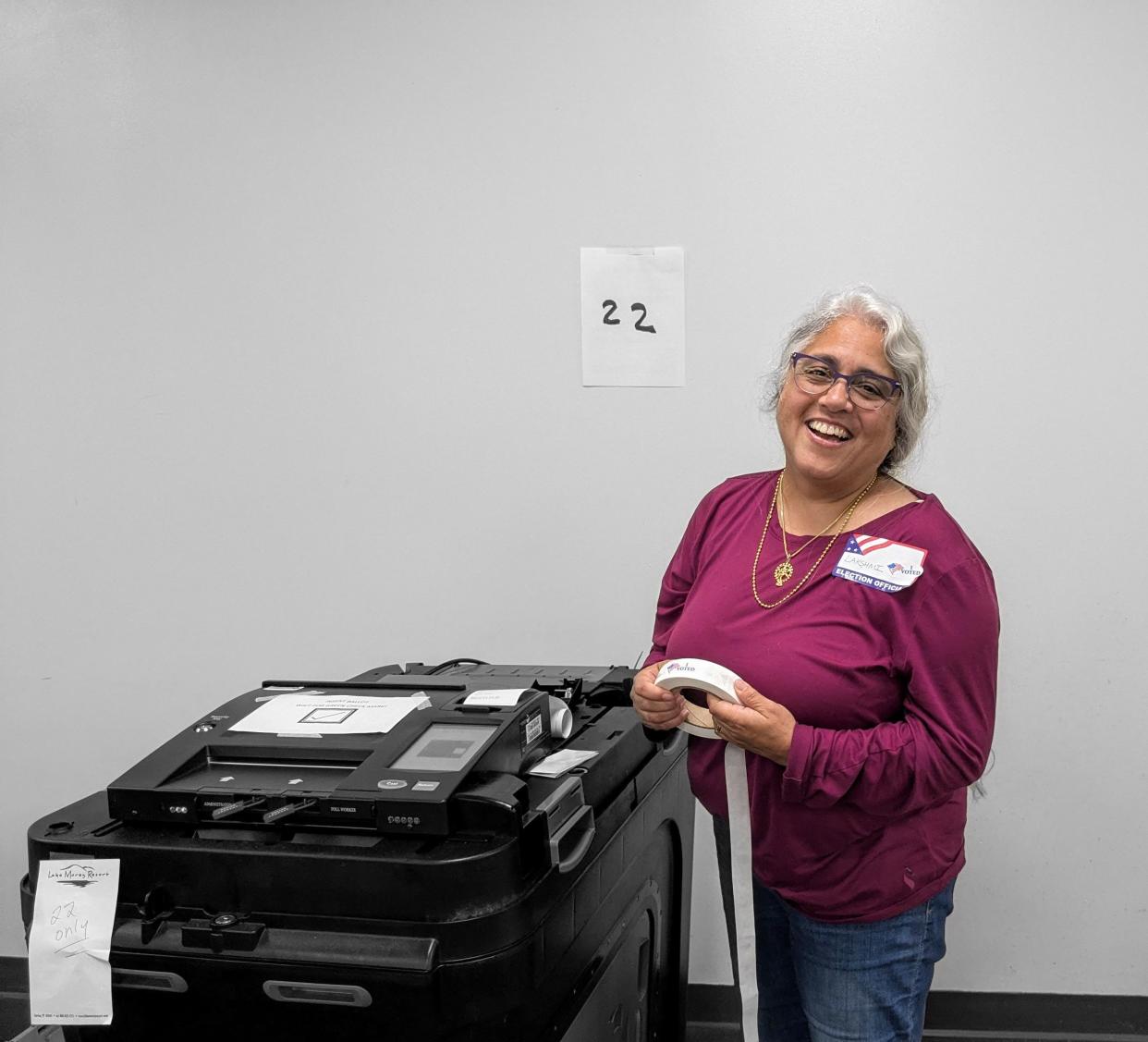The November election is coming up fast: Three things to consider in Vermont
On Nov. 5, Vermonters will head to the polls to help choose the next president, the state's top elected officials including governor and representatives to the U.S House and Senate.
Voters selected major party candidates for the November general election during the Aug. 13 statewide primary. The primary's results were certified on Wednesday, Aug. 21, a day later than planned due to a hiccup with the election management system’s report-generation function, according to a press release from the Vermont Secretary of State's office.
Here are three things to reflect on as you prepare to visit the polls in the November election.

Some election workers are concerned for their safety
Essex Junction resident Lakshmi Joshi Boyle has volunteered as an election worker for five years, but this is the first time she’s felt uneasy serving at the polls, she told the Free Press during the Aug. 13 primary.
“I’ve never personally felt unsafe before, but I’m wondering about this November,” Boyle said regarding the general election this fall. “Some people have decided not to work (at the polls) out of fear.”
That fear stems from increased threats nationwide against election workers following the 2020 presidential race, which former President Donald Trump and his supporters falsely claim had been “stolen” from him. Rising hostility towards poll volunteers has led to staff shortages in some parts of the country.
Seán Sheehan, the director of elections at the office of the Vermont Secretary of State, can vouch that safety is a real concern among Vermont poll workers, some of whom have come to state office staff with their fears, he told the Free Press in an email.
“We often like to think our little corner of the country is immune, but we’re not,” Sheehan wrote. “The fact is it can happen anywhere.”
Vermont lawmakers like U.S Sens. Peter Welch and Bernie Sanders have also recently advocated for greater legal ramifications nationwide for individuals who threaten election workers.
In a letter to the U.S Justice Department, Welch, Sanders and 20 other colleagues argued that threats against public servants jeopardizes democracy and prevents poll workers from performing their jobs.
“It is for these reasons that we urge the Department to prioritize the investigation and prosecution of threat against election workers, including by allocating sufficient resources to meet these threats head on.”
To help protect local poll workers, the Vermont Secretary of State’s Office provides volunteers with safety training, including advice on how to de-escalate volatile interactions.
Officials also seek to curb disinformation – which Sheehan said fuels “much of the animosity around elections” – through offering educational resources, like the webpage “Facts Matter – Six Truths about Vermont Elections” and a video explanation on how the state ensures election integrity.
Vermont saw its lowest primary turnout in a decade
As the certification process proved, only 15% of Vermont voters cast ballots in the Aug. 13 primary this year – the lowest turnout the state has seen in a decade. In 2018, 23% of voters showed up for the summer primary and in 2020, 34%.
Sheehan pointed to several factors leading to the low turnout, including that many incumbents ran uncontested this year and that voters tend to participate more in the March presidential primary and November general elections.
“Elections tend to have higher turnout when there are more competitive races, both in terms of number of races and for the higher profile races,” Sheehan said. “2022 had a large number of open seats and competitive races up and down the ballot. This year had fewer.”
Regardless of the reason for skipping the polls, Sheehan said democracy is dependent on voter participation.
For eligible but unregistered voters, here are a few resources to help you perform your civic duty:
How to Register and Vote in Vermont Elections (translated into 14 languages)
The Secretary of State's Office will release an official voters guide in late September.
Vermont picks its first black female gubernatorial nominee
On Aug. 13, Democrat-Progressive Esther Charlestin became the first black woman in Vermont to earn a gubernatorial nomination, and only the second in the nation after Georgia politician Stacey Abrams.
If elected, Charlestin, the daughter of Haitian immigrants, would also be the first person of color to hold Vermont’s highest statewide office and the second woman.
Despite the significance of her primary win, Charlestin has said she faces an “uphill climb” to securing the governorship.
Charlestin, a former Middlebury selectboard member who has yet to hold a statewide office, will need to defeat incumbent Republican Phil Scott – the nation’s most popular governor for several years running.
Charlestin did not respond to multiple requests for comment as to how she plans to campaign against Scott.
Megan Stewart is a government accountability reporter for the Burlington Free Press. Contact her at mstewartyounger@gannett.com.
This article originally appeared on Burlington Free Press: Three things to reflect on before the Nov. 5 general election




